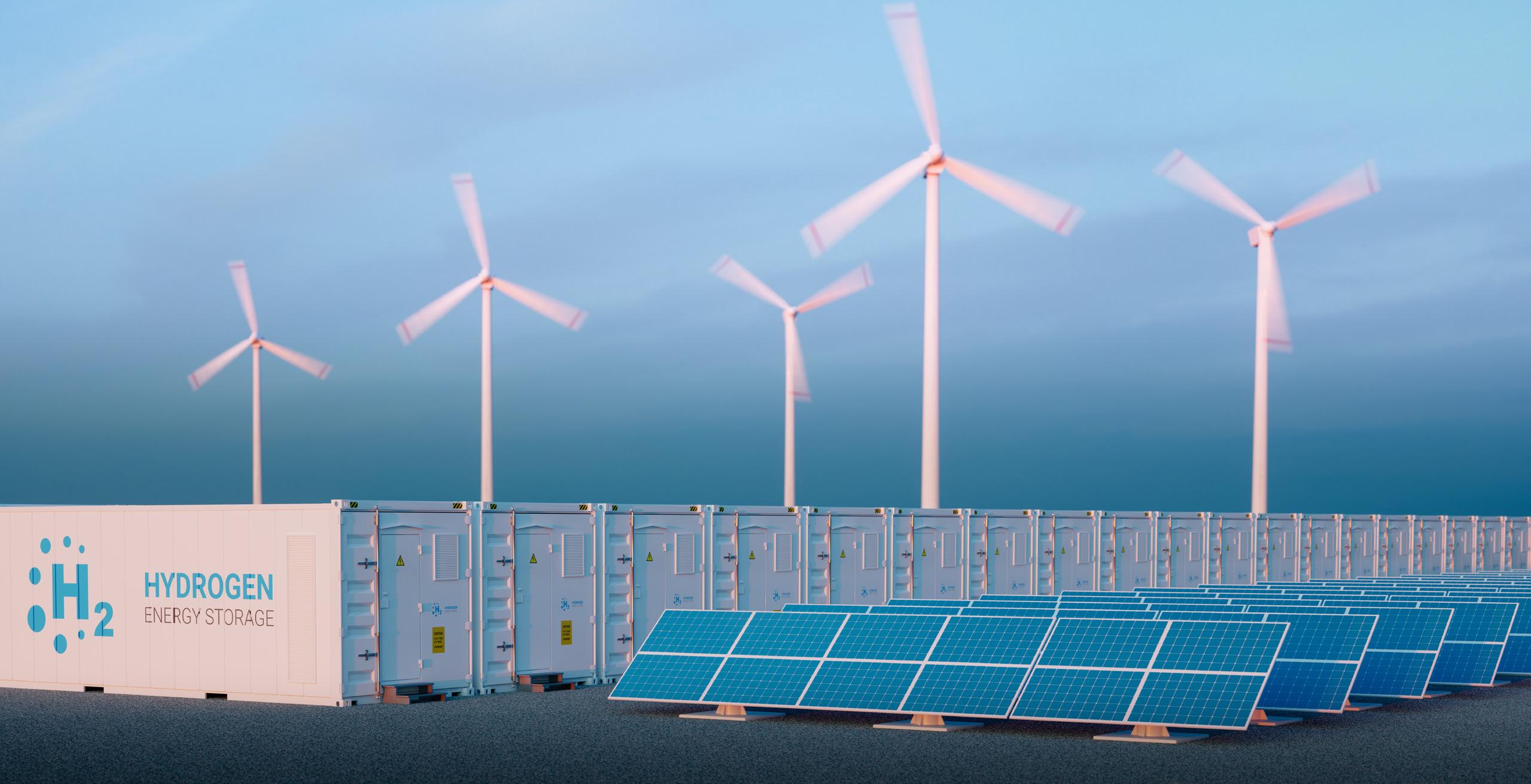
3 minute read
Modularity: key for hydrogen to become business as usual in mines
Interview with Bernhard Voll, SMA by MELODIE MICHEL Reporter, Energy and Mines
Because of its versatility, hydrogen is set to change the mining sector dramatically, but opinions differ on the path to commercial viability for this versatile molecule. Energy and Mines speaks to Bernhard Voll, Senior Technical Expert & Platform Manager at SMA Sunbelt Energy GmbH, about what is needed for hydrogen to become business as usual in mines.
Advertisement
According to him, one way to overcome the economic challenges around hydrogen would be to make this technology modular, following the way paved by the solar industry. “The biggest challenge is that mining companies’ expected return on investment is typically very short, because operations don’t exist forever,” he explains.
In Zimbabwe, SMA developed a modular solar solution for a mine with a fiveyear lifetime, so that it could be packed up and taken to the next site at the end of the mine life. “With something like that, you can afford longer return on investment. This would absolutely work with hydrogen: you just have to put everything in containers,” Voll adds.
In terms of economics, it is important to consider the versatility of hydrogen in mines. When taking into account that it can work as long-term energy storage, green fuel for trucks and thermal power for mining processes such as steel and aluminium refining, it is much easier to reach a viable business case.
“Hydrogen may not be ready yet economically, but the comparison is very interesting,” says Voll. “Grid connection is perfect, but it would not allow you to run your trucks, because electrification on a 250-tonne truck just won’t work. Battery storage is great, but only short-term. Hydrogen can be used as a multi-purpose fuel for electricity from solar, for long-term storage, fuel for the trucks and for heating. It has the ability to fuel the entire mining supply, and therefore there is no comparison with other options,” he adds.
In fact, Voll believes that when the other option is to truck diesel over thousands of kilometres, or build a gas pipeline over the same distance, hydrogen may already be viable today. “At roughly US$800,000/km, you can get to US$800mn just for the pipeline. You can build a fairly big solar to hydrogen plant using that money,” he explains.
Hydrogen is widely seen as the missing technology to get to 100% renewable energy on mine sites, but Voll warns that it’s all about striking the right balance. He says: “It’s important to have a proper grid management system to ensure that the frequency and voltage is stable since mining operations have an incredibly volatile load. The key is to have a good combination among solar, a battery as short-term storage and hydrogen as long-term storage to make sure that even on a rainy day or week you still have power. Maybe you add diesel as an emergency back-up, but I would say 100% renewable is absolutely possible for mobility and electricity in mines.”
Cost curve declining rapidly
In any case, the industry needs to get involved now if it wants to have a commercial solution in the future. Voll remembers that when the solar industry kicked off in the 1990s, many — himself included — didn’t believe in its potential, and at €2 or more per kWh, it was deemed completely unviable. “Today, even in Germany where we don’t have that much sun, the kWh is down to less than €0.05: that’s the change we had in the space of 30 years. If we apply a similar metric for hydrogen, we will easily reach values that are extremely competitive compared to current fuel sources such as trucked diesel or long gas pipelines,” he notes. And until this competitiveness is achieved, Voll believes it is up to governments to step in and subsidise projects to build up the industry.
In terms of timeline, he optimistically predicts that hydrogen will become business as usual in mines by 2030, with the first commercial projects around 2025.
The hydrogen energy revolution is also set to create tremendous opportunities for the solar sector. “Hydrogen is the most versatile molecule on our planet, and therefore the solar market we have today is probably very small compared to what it will be if we produce hydrogen with solar,” Voll says, adding that countries like Australia, Chile and South Africa, which have a lot of space and sun, will be perfect to become exporters of hydrogen.
Having learned from his own skepticism around solar energy about 30 years ago, Voll is convinced that widespread use of hydrogen in power solutions is not a matter of if, but when. “At some point, we will reach the end of the oil age, and hydrogen made by solar could be a perfect replacement,” he concludes.



